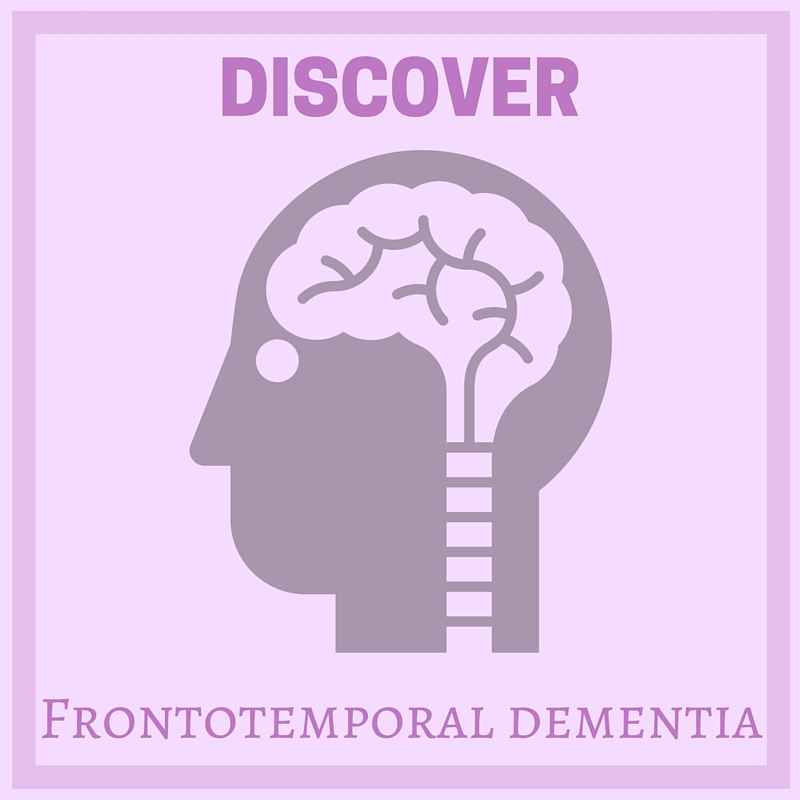
Frontotemporal Dementia (FTD) is another type of dementia that doesn’t often get as much attention unless you are personally connected to the disease. For Alzheimer’s and Brain Awareness month, All About Seniors wants to bring attention to Alzheimer’s as well as other forms of dementia.
Frontotemporal Dementia (or frontotemporal degenerations) refers to a group of disorders caused by progressive nerve cell loss in the brain’s frontal lobes or its temporal lobes. The frontal lobe is the part behind your forehead and the temporal lobe refers to the region behind your ears.
DID YOU KNOW: FTD affects an estimated 50,000-60,000 Americans
What is FTD?
Nerve cell damage that leads to a loss of function in these brain regions, which variably cause deterioration in behavior and personality, language disturbances, or alterations in muscle or motor functions.
Although specific symptoms may vary from patient to patient, FTD is marked by an inevitable deterioration in functioning.
How is FTD different from other dementias?
- Frontotemporal degeneration is a gradual, progressive decline in behavior and/or language. The memory is usually relatively preserved. As the disease progresses, it becomes increasingly difficult for people to plan, organize, or behave appropriately in social situations or professional settings.
- The onset of FTD usually occurs in a your 50s or 60s (roughly 60% of cases).
DID YOU KNOW: FTD represents an estimated 10%-20% of all dementia cases. It is recognized as one of the most common dementias occurring in the younger population.
What causes FTD?
A number of different diseases cause frontotemporal degenerations.
- A group of brain disorders involving in the protein tau.
- A group of brain disorders involving the protein TDP43.
What are the subtypes of FTD?
1. Behavior variant frontotemporal dementia (bvFTD)
In bvFTD, nerve cell loss is most prominent in the areas of the brain that control conduct, judgement, empathy and foresight, among other abilities. It’s characterized by prominent changes in personality, interpersonal relationships and conduct. These changes often occur in people in their 50s and 60s, but can develop as early as their 20s or as late as their 80s.
2. Primary progressive aphasia (PPA)
This form of dementia affects language skills, speaking, writing and comprehension. It usually develops in midlife, before age 65, but can occur in later life as well. There are two distinct forms:
a. Semantic variant PPA – individuals lose the ability to understand or formulate words in a spoken sentence
b. Nonfluent/agrammatic variant PPA – a person’s speaking is very hesitant, labored or ungrammatical
3. Disturbances of motor function.
This form of dementia refers to movement or muscle function. There are three disorders that fall into this category:
a. amyotrophic lateral sclerosis (ALS) – muscle weakness or wasting. Also known as Lou Gehrig’s Disease
b. Corticobasal syndrome – causes arms and legs to become uncoordinated or stiff
c. Progressive supra nuclear palsy (PSP) – causes muscle stiffness, difficulty walking and changes in posture. Also affects eye movements.
DID YOU KNOW: The course of the disease ranges from 2 to over 20 years, with the mean course of 8 years from the onset of symptoms.
What treatments are available?
There are no specific treatments for any of the frontotemporal subtypes; however, medications can reduce agitation, irritability and/or depression.
FTD is degenerative. It gets worse over time, but the speed of decline differs from person to person.
It is important for caregivers and family members to think about long-term management issues and identify a team of experts to help with difficult medical, financial and emotional challenges.
Sources and Resources:
http://www.alz.org/dementia/fronto-temporal-dementia-ftd-symptoms.asp
https://www.nia.nih.gov/alzheimers/publication/frontotemporal-disorders/introduction



